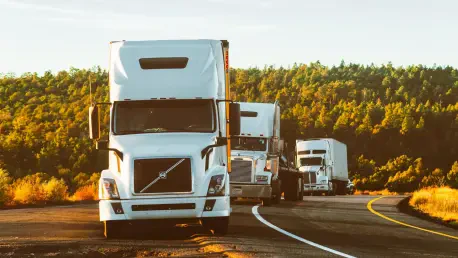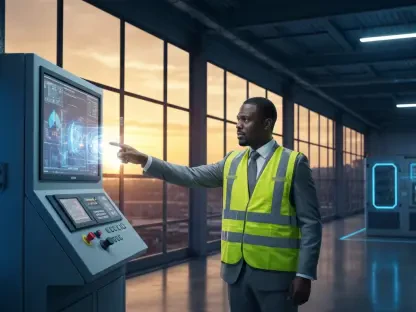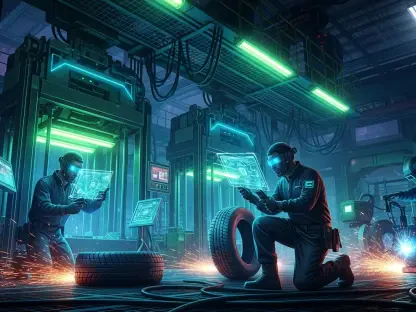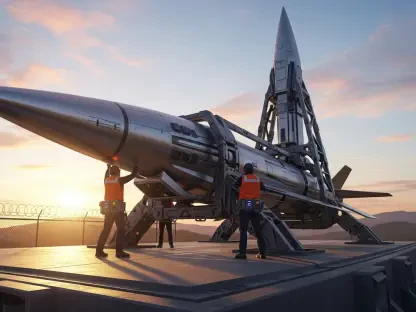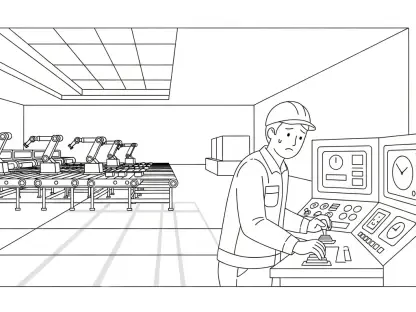Imagine a bustling highway in Houston, Texas, where massive freight trucks glide seamlessly through traffic, merging lanes and navigating complex interchanges without a single human at the wheel, marking a significant step toward a future once thought to be pure science fiction. This scenario has edged closer to reality with a groundbreaking driverless validation run by Bot Auto in the heart of the city. This milestone marks a pivotal moment for the freight industry, demonstrating that autonomous technology can handle real-world conditions on a highway without human backup or remote intervention. The implications are staggering, as this achievement shifts the conversation from mere speculation to concrete evidence of what AI-driven trucks can accomplish. Amid persistent challenges like driver shortages and supply chain delays, this development sparks curiosity about whether autonomous trucks could be the key to transforming freight logistics in Houston and beyond, promising efficiency and innovation on an unprecedented scale.
Breaking New Ground with Driverless Technology
The recent driverless test by Bot Auto in Houston stands as a landmark event in the evolution of autonomous trucking. Unlike earlier experiments that relied on controlled environments or limited scopes, this run showcased a truck operating independently under genuine highway conditions, managing critical tasks such as lane changes and traffic interactions with precision. This success addresses long-standing doubts about whether AI can truly replace human oversight in complex logistics scenarios. The ability to execute end-to-end timing without intervention suggests a future where trucks could operate continuously, unshackled by the limitations of human fatigue. For Houston, a major hub for freight movement in the South, this test is more than a technological feat; it’s a signal that the city could become a proving ground for innovations that redefine how goods are transported across the nation, potentially setting a standard for other regions to follow.
Beyond the immediate spectacle of a driverless truck navigating Houston’s roads, this event underscores a shift in industry perception. The technology’s capacity to handle real-world variables—unpredictable traffic patterns, sudden merges, and diverse road conditions—provides tangible proof of reliability that skeptics have long demanded. This milestone also highlights the potential for scalability, as the data gathered from such runs can inform future iterations of autonomous systems. While the test itself was a singular achievement, its ripple effects could influence how logistics firms in Houston approach fleet management, encouraging early adopters to explore partnerships with tech innovators. As the industry watches closely, the focus now turns to whether this proof of concept can translate into practical, everyday applications that address the pressing needs of freight transport in a city known for its sprawling infrastructure and high cargo volumes.
Tackling Industry Challenges with AI Solutions
The freight industry has grappled with significant hurdles for years, notably a chronic driver shortage that continues to disrupt supply chains across North America. With retirements outpacing new entrants, as reported by the American Trucking Associations, long-haul routes often go understaffed, leading to delayed deliveries and frustrated businesses. Autonomous trucking emerges as a compelling solution, particularly for the grueling interstate segments that human drivers find undesirable. By delegating these monotonous hauls to AI systems, as demonstrated in Houston, the technology could alleviate labor pressures while enhancing efficiency. Reduced accidents due to driver fatigue, more consistent delivery schedules, and optimized fuel consumption through intelligent routing are among the benefits that could reshape logistics, offering a lifeline to an industry under strain and positioning Houston as a leader in adopting such transformative tools.
Moreover, the integration of autonomous trucks could redefine labor dynamics within the freight sector. Human drivers might shift their focus to regional and last-mile deliveries, where local knowledge and customer engagement remain invaluable, while AI takes on the repetitive long-haul journeys. This restructuring not only addresses staffing shortages but also improves job satisfaction by reducing the physical and mental toll of extended drives. In Houston, where logistics networks are vital to the regional economy, such a shift could stabilize supply chains that serve both local businesses and national markets. The successful test run by Bot Auto provides a glimpse of this future, suggesting that AI could complement human efforts rather than replace them entirely. As companies begin to explore these hybrid models, the potential for a balanced workforce emerges, one that leverages technology to solve systemic issues while preserving the human element in critical areas of operation.
Navigating the Path to Widespread Adoption
While the Houston test marks a significant leap forward, the road to widespread adoption of autonomous trucks remains fraught with challenges. Regulatory bodies will require extensive data from varied conditions and routes to ensure safety before greenlighting large-scale deployment. This cautious approach is necessary, given the high stakes of entrusting valuable freight to driverless systems on busy highways. Logistics companies, too, must balance the promise of cost savings against the risks of early adoption, as trust in AI technology will take time to build among stakeholders. A gradual rollout seems likely, with initial implementations possibly focusing on specific freight corridors in regions like the South, where predictable weather and supportive regulators could ease the transition. Houston’s role as a testing ground could prove instrumental in shaping these early phases, offering insights into real-world performance.
Additionally, the broader implications of autonomous trucking extend beyond shipping rates and delivery times. The integration of AI-driven vehicles could influence insurance policies, as risk models adapt to new technology, and even highway infrastructure planning, as cities like Houston prepare for fleets of driverless trucks. Truck design itself may evolve, with manufacturers tailoring vehicles to optimize autonomous systems over human-centric features. Building industry buy-in will be critical, as consistent performance during pilot programs will determine whether companies embrace this shift or remain hesitant. The Houston run, while a singular event, serves as a catalyst for these discussions, prompting stakeholders to consider how logistics might look in the coming years. As testing continues and data accumulates, the focus will shift toward creating frameworks that support safe, scalable deployment, ensuring that innovation aligns with practical needs across the freight ecosystem.
Reflecting on a Milestone with Future Potential
Looking back, the driverless validation run by Bot Auto in Houston proved to be a defining moment that shifted autonomous trucking from theoretical promise to demonstrated reality. This event tackled the fundamental question of whether trucks could operate without human supervision, setting a precedent for what technology could achieve in addressing industry woes. As discussions unfolded, it became clear that while the path forward demanded rigorous testing and gradual implementation, the potential benefits—ranging from efficiency gains to supply chain stability—were undeniable. Moving ahead, stakeholders must prioritize collaboration between innovators, regulators, and logistics firms to build trust and refine systems. Exploring pilot programs in strategic corridors, investing in infrastructure upgrades, and fostering dialogue on safety standards will be crucial next steps. Houston’s early embrace of this technology could inspire a blueprint for nationwide adoption, paving the way for a transformed freight landscape.
